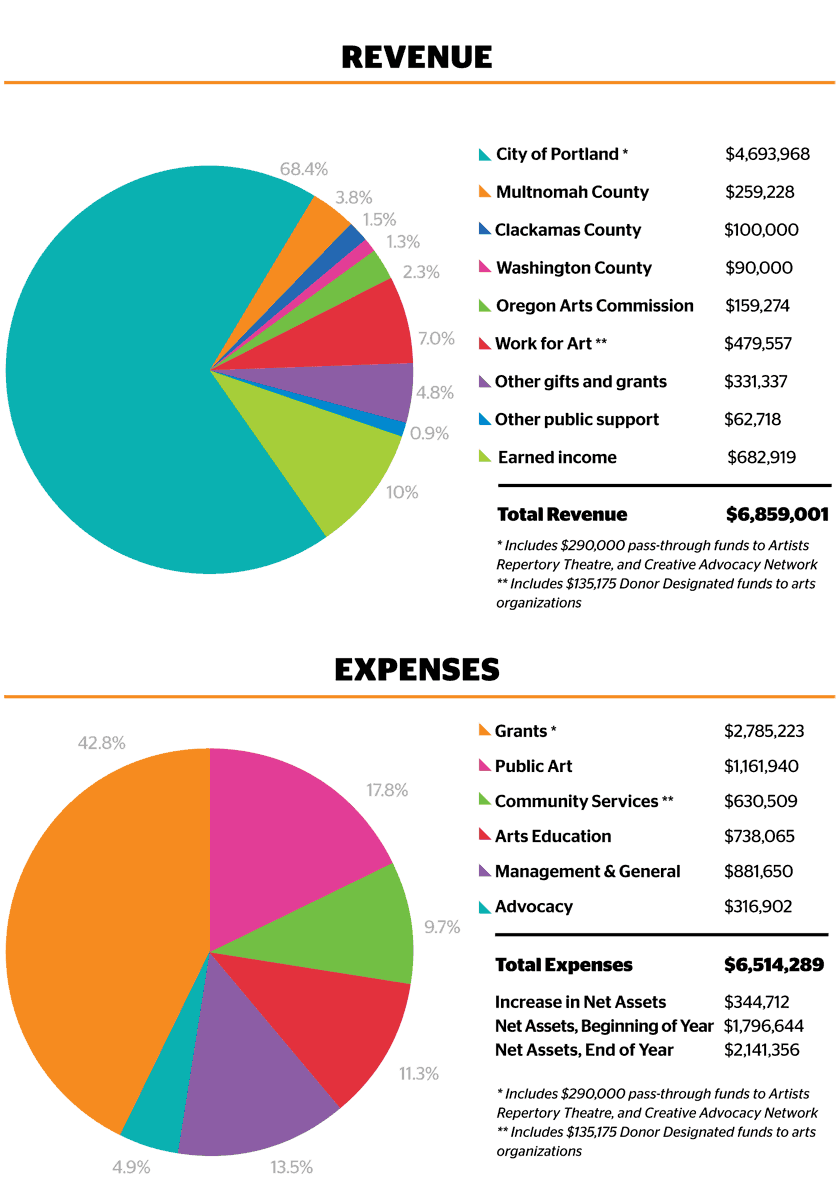FINANCES
Balancing Acts
WITH THE ONGOING RECESSION, the 9 percent reduction in funding from the City of Portland and the 3 percent reduction from Multnomah County were not a surprise for the fiscal year that ended June 30, 2011. RACC was largely able to offset the shortfalls using funds left over from previous opportunity grant cycles. (Funding from other public sources—Washington and Clackamas Counties and Metro—remained steady from the previous year.)
The current economic climate has also highlighted hardships for area arts organizations and prompted RACC to identify areas in which it can better help organizations cope with challenging budgets and access the resources they need, often through workshops, scholarships, and opportunity grants for emergencies. It can be “a balancing act,” says director of operations Cynthia Knapp, “to make sure we are able to continue to provide the level of grants that we have in the past.”
Private fundraising was up in fiscal year 2011, which also helped RACC maintain that level of support. The increase was due in part to growth in the workplace-giving program Work for Art, which attracts small donations from a lot of people and then doubles them thanks to matching grants from the City of Portland, among others. Proceeds from Work for Art go directly into RACC’s grants program. The Right Brain Initiative earned its first National Endowment for the Arts grant for its in-classroom and teacher professional-development programs.
Local construction projects, including Legacy Emanuel’s Randall Children’s Hospital (opening in 2012) and the completion of TriMet’s downtown Bus Mall, added more than $168,000 in 2011 for private contracts. Even more public art funds are anticipated for fiscal year 2012, including funds from large public projects like the Portland Streetcar Loop, which will extend streetcar service to the east side, as well as the East County Courthouse in Gresham and the Gibbs Pedestrian Bridge in Southwest Portland.
The increased public art funding is just one of the bright spots on the horizon for the new fiscal year (FY12, which is still under way). Knapp also points to new grants from the Meyer Memorial Trust and the Paul G. Allen Family Foundation and strong renewed support from businesses and foundations for the Right Brain Initiative. The City of Portland has restored its level of funding to 2010 levels, a 14 percent increase. And because more people stayed in local hotels last year, the Transient Lodging Tax raised enough funds for RACC to receive its $200,000 allocation for fiscal year 2012 (there had been no allocation the previous three years). “It’s a really big deal,” says Knapp of the hotel-motel tax. “We were able to grant an additional $100,000 in project grants in FY12.”
Funding is one measurement of success and stability; efficiency is another. At RACC, 86.5 percent of revenues are being used for programs, well over the usual benchmark of 75 percent that donors use to evaluate spending practices. RACC’s record of devoting funds to its grants and programs is “really solid, and also realistic,” says Liz Clarke, an auditor with AKT. “They’ve kept it up, even with the growth in their programs.”![]()

